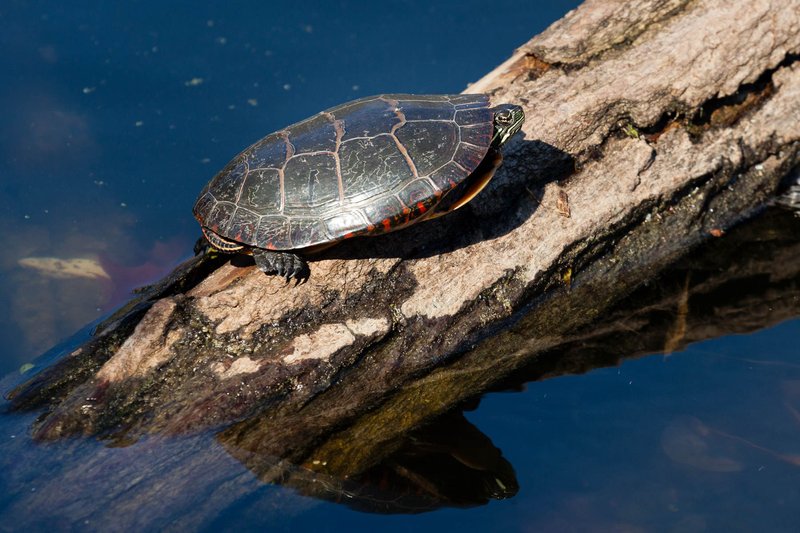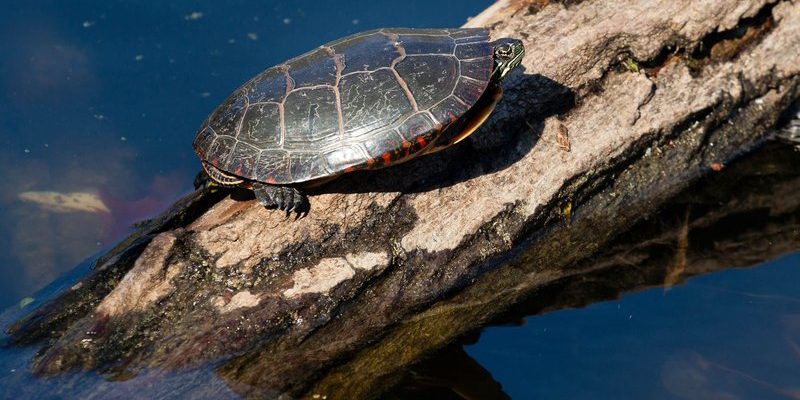
Painted turtles are more than just pretty faces; they are key players in their ecosystems. They help maintain the balance of aquatic life while engaging in behaviors that might seem simple but are actually quite important. So whether you’re a nature enthusiast or just someone curious about these turtles, you’re in for a treat. Let’s break down what makes the painted turtle so special.
Understanding the Painted Turtle’s Habitat
Painted turtles thrive in a variety of freshwater habitats across North America. They are commonly found in ponds, marshes, lakes, and rivers. You might be wondering why they prefer these specific environments. Well, painted turtles need access to both land and water. They often bask on logs or rocks in the sun, but they require water for feeding and as a safety escape route from predators.
In these habitats, painted turtles also find the food sources they depend on. They munch on aquatic plants, insects, and even small fish. This diet helps keep the ecosystem balanced, as they contribute to the control of aquatic plant growth and help maintain water quality. Their presence indicates that the habitat is healthy and robust.
The Life Cycle of the Painted Turtle
Let’s talk about how painted turtles grow and reproduce. Their life cycle begins when a female turtle lays her eggs in sandy or loose soil, often near the water’s edge. After about 10 to 80 days, depending on the temperature, those little hatchlings emerge. Isn’t it incredible to think how such tiny creatures can grow into those vibrant turtles we see basking in the sun?
As they grow, painted turtles can live for several decades—sometimes up to 50 years! During this time, they undergo various life stages, from hatchling to juvenile to adult. Each stage plays an essential role in their ecosystem: for example, young turtles help control algae growth while adults contribute to the local wildlife as both predators and prey.
Painted Turtles as Ecosystem Engineers
You might be surprised to know that painted turtles play a vital role as ecosystem engineers. By feeding on aquatic vegetation, they help control plant overgrowth, which can otherwise smother other forms of life. Many animals rely on that balance, so it’s crucial to have species like the painted turtle around.
Additionally, their nesting habits contribute to soil health. When turtles dig their nests, they aerate the soil and promote plant growth. This process not only benefits the painted turtles but creates a healthier environment for other species, from insects to larger animals. It’s a beautiful example of how interconnected everything is in nature.
Painted Turtles and Their Predators
Like all creatures, painted turtles have their share of predators. Birds of prey, raccoons, and even larger fish can pose a threat to these colorful reptiles. Understanding their natural enemies helps highlight the turtle’s role in the food chain.
When basking on a sunny rock, for example, painted turtles must be cautious. Their hard shells provide protection, but they still need to be alert. Interestingly, the painted turtle’s behavior—sunbathing and foraging—creates opportunities for scavengers and predators, contributing to a dynamic ecosystem.
The Impact of Humans on Painted Turtles
Unfortunately, painted turtles face threats from human activities. Pollution, habitat destruction, and climate change can negatively impact their habitats. For instance, if a pond becomes polluted, it affects not just turtles but the entire aquatic community.
Conservation efforts are crucial to protect painted turtles. By creating awareness and preserving their habitats, we help maintain biodiversity. Every little action counts, whether it’s supporting local conservation projects or reducing plastic waste in waterways.
The Painted Turtle in Cultural Context
Beyond their ecological importance, painted turtles hold cultural significance as well. Many Native American tribes view turtles as symbols of longevity and wisdom. Stories and legends often portray them as gentle, wise beings, reinforcing their role as important creatures in the natural world.
Even in modern times, these turtles are featured in art and media, captivating hearts and minds everywhere. Their colorful patterns and peaceful demeanor make them relatable, drawing attention to the need for their conservation.
So, the painted turtle is more than just a beautiful shell basking in the sun. They are essential players in their ecosystems, helping to maintain balance and promote biodiversity. From their nesting habits to their roles as foragers and prey, they weave a rich tapestry within their natural habitat.
If you find yourself near a pond or lake, take a moment to appreciate these incredible creatures. Remember how important they are to the environment and think about what you can do to help protect them. After all, every small effort counts in maintaining the beauty of our planet’s ecosystems.

